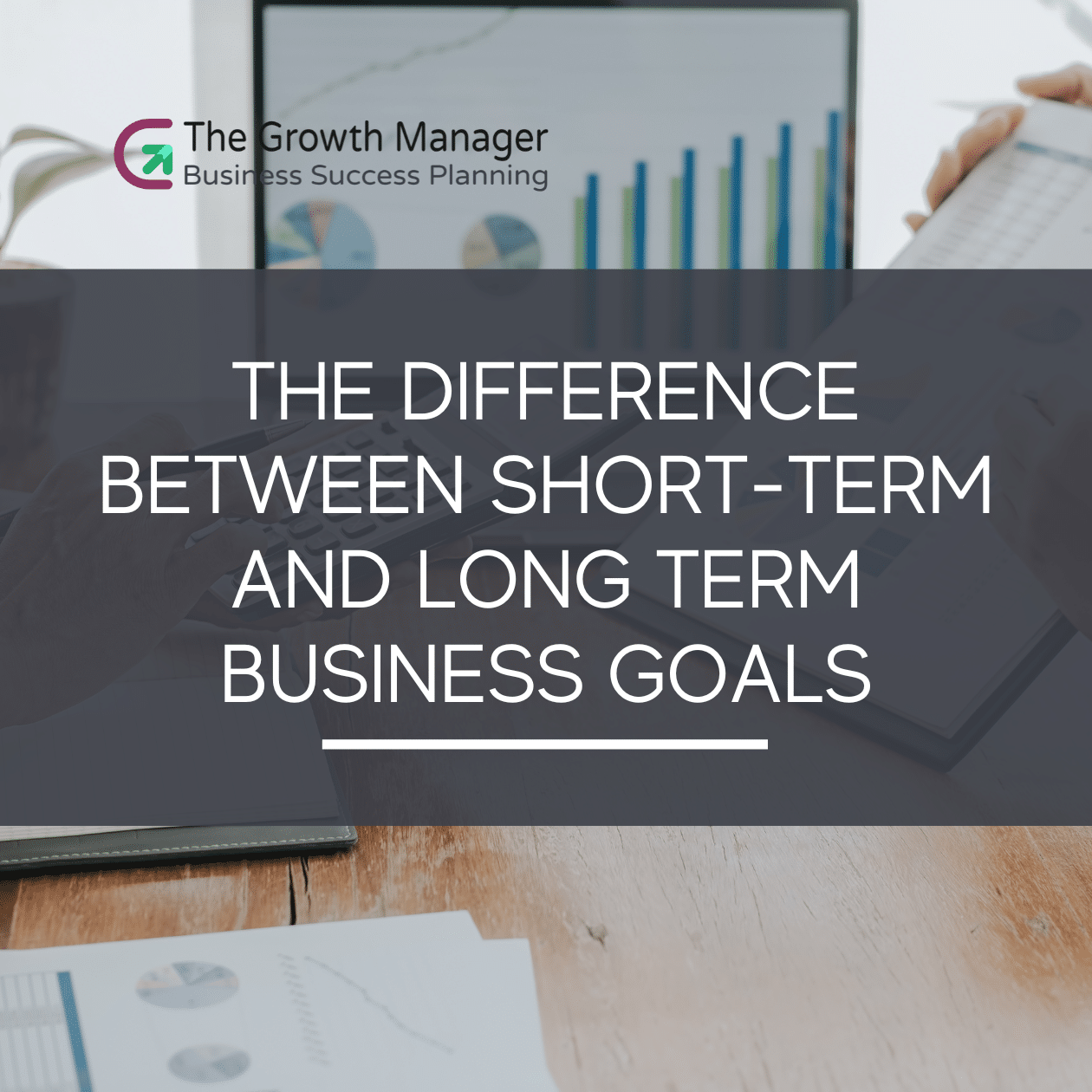Unlike your mum’s famous cooking, the recipe for business success calls for various ingredients and steps with time put into the preparation and a healthy dose of patience. It requires short-term work to yield long-term results.
Setting goals is a critical aspect in the world of business that drives it towards growth and success. Amidst the myriad of objectives that a business can pursue, it’s highly important to understand the nuanced differences between short-term and long-term goals.
 Defining Short-Term and Long-Term Goals.
Defining Short-Term and Long-Term Goals.
Short-Term Goals: These are immediate targets a business aims to achieve within a relatively short time frame, typically achievable within a few weeks up to a year. These goals are tactical, focusing on a specific operational aspect such as increasing sales figures, a new product launch, improving customer service ratings, or optimising its website conversion rates.
They serve as stepping stones towards a broader set of aspirations towards achieving long-term objectives further down the road. It provides a roadmap for progress in the short run. They are concrete, specific, and measurable, enabling a business to track its performance, make timely adjustments, and provide quick wins that boost morale and demonstrate progress.
Long-Term Goals: Embody the grand vision and enduring ambitions of a business, reflecting its vision and strategic direction. It can span several years or even decades into the future. Unlike short-term goals that focus on immediate results, long-term objectives entail sustained growth, market dominance, and lasting impact.
It might include goals like expanding to new markets, becoming an industry leader, achieving a specific revenue target, or revolutionising the industry through innovation. In many cases, these goals are more complex and require coordinated efforts across multiple aspects of the business. They may be aspirational, yet attainable. It can also guide strategic decision-making and shape the overall direction of the business.
The main difference between the two is that long-term goals tend to drive direction and strategy while short-term goals are bound to your current situation and tend to be much easier to achieve. Without a doubt, the most obvious difference is the time and resources it will take to accomplish each.
Understanding and aligning the distinction between short-term and long-term goals is essential for businesses to be able to develop a balanced growth strategy. Granted that tackling both is a delicate balancing act.
While short-term goals provide immediate direction and motivation, they should ultimately contribute to the achievement of long-term objectives. Conversely, businesses must anticipate future trends, assess potential risks and opportunities, and develop robust strategies to achieve long-term goals effectively. It should be broken down into manageable short-term targets or tasks to make them more achievable and to provide a clear path forward.
By harmonising these short and long-term objectives, businesses can navigate the complexities of growth with clarity and purpose.
Timeframes and Durations.
Timeframes and durations play a crucial role in shaping the nature of short-term and long-term goals, they can influence your goal-setting strategies and the way you plan for your business in the future. They define the nature of your goals and significantly impact the strategies you employ to achieve them.
The relatively short timeframes of short-term goals (a few weeks to a year), necessitate a focused and action-oriented approach, with clear milestones and deadlines to track progress and measure success. Their immediate nature is aimed at addressing pressing needs or seizing immediate opportunities. Agile methodologies and rapid iteration are often employed to achieve objectives and to adapt quickly to changing circumstances and market dynamics.
The extended time frames of long-term goals (several years) such as increasing sales, becoming a niche leader, or expanding company locations. These represent the strategic vision and aspirations of the business over the long haul, guiding its growth trajectory and shaping its future direction. Their long timeframes require careful planning, foresight, and sustained efforts to achieve.
Three factors influence goal-setting strategies based on goal duration:
- Planning Horizon: Short-term goals have a shorter planning horizon, requiring immediate and tactical focus on the present needs of the business. Their short duration allows for quick feedback to enable businesses to adjust their strategies and actions based on the results. Their immediate nature requires a more reactive approach, needing flexible and adaptable strategies to address changing business environments, challenges, and seizing opportunities. In contrast, the longer planning horizon of long-term goals prompts businesses to anticipate future trends, opportunities, and challenges and requires the development of robust strategies to achieve objectives over time. It reflects the strategic direction and vision of the business.Their extended timeframe requires a more proactive and planned approach, which is often complex, involving multiple stages, and coordination across different business aspects and departments of the business.
- Resource Allocation: Goal duration also influences how businesses allocate vital resources to achieve them. Short-term goals require a quick allocation of resources to address immediate needs, whereas long-term goals may involve a more strategic resource allocation to support sustained growth and development over time.
- Risk Management: Managing risks and uncertainties is also affected by goal durations. Short-term goals, for instance, can be subjected to immediate risks and fluctuations in the market, which would require businesses to implement agile risk management strategies. On the other hand, long-term goals would require businesses to anticipate and mitigate risks and uncertainties that could impact their ability to achieve objectives over the long term.
Fully understanding how typical time frames impact goal-setting strategies, allows businesses to develop more effective and holistic approaches to their business strategies in achieving short-term and long-term goals.
Scope and Specificity.
In the realm of business planning, scope and specificity are fundamental aspects that distinguish short-term goals from long-term goals. Let’s delve into these differences further and the importance of setting specific, measurable objectives for effective planning.
It is often characterised as tactical objectives given their narrow scope and focus on immediate actions or outcomes within the operational context of the business. They are mostly geared towards addressing specific challenges, seizing opportunities, or improving business performance in the short run.
They typically involve day-to-day activities and tasks contributing to the overall function and efficiency of the business. Some examples include studying market trends and developing a timely strategy, increasing website traffic through inbound marketing, reducing production costs, or improving customer satisfaction scores.
Long-term goals, in contrast, encompass the strategic vision and aspirations of the business over an extended period due to their broader scope. They are transformative and guide the business in its overall direction and growth.
They involve significant initiatives and investments to achieve sustainable growth, market leadership, or industry dominance. Some examples include establishing a strong brand presence, developing innovative products, going green and eco-friendly, or expanding into new markets and regions.
Flexibility and Adaptability.
Flexibility and adaptability are key considerations when contrasting both short-term and long-term goals in the context of business planning, both traits are essential in navigating the ever-changing market landscape.
Due to their immediate and shorter timeframe, short-term goals inherently allow greater flexibility. As these goals are often tactical and operational, you are provided with the capacity to enact rapid adjustments based on evolving market dynamics, customer feedback, or changes in the competitive landscape.
This flexibility enables a business to respond quickly and mitigate unforeseen risks or seize opportunities. However, it’s important to ensure that the goal remains aligned with the overall strategic direction of the business while making these adjustments.
A business that’s agile and adaptable can pivot its strategies, reallocate resources, and refine its tactics in real time, remaining responsive to market shifts.
In contrast, the stability and enduring nature of long-term goals provide a strategic anchor guiding the direction and trajectory of the business over an extended period. While they may be less susceptible to short-term fluctuations, they still require a degree of adaptability.
Their extended timeframe may make them seem rigid but in reality, they too need to be adaptable based on evolving market trends, technological advancements, or regulatory changes. While its core vision might remain constant, adaptability ensures that the business remains relevant and competitive without losing sight of its strategic objectives.
Interdependence and Alignment.
Both short-term and long-term goals are not isolated milestones but rather interconnected stepping stones in a business’s journey to sustainable growth.
Being immediate and tactical, short-term goals often serve as the building blocks for long-term objectives, providing the momentum needed to propel a business towards its strategic vision. Each short-term goal should directly support the long-term objective by incrementally building the business’s competitive advantage and market position.
On the other hand, long-term goals provide the strategic direction that guides the setting of short-term goals, serving as the ‘north star’, and guiding the business towards its ultimate vision. For example, the long-term goal of becoming an industry leader will affect the setting of short-term goals related to product development, market penetration, and customer satisfaction.
The key to this alignment is ensuring short-term goals contribute to a long-term objective, and each long-term goal should be broken down into achievable short-term targets. This ensures that all efforts are directed towards the strategic vision of the business, fostering sustainable growth.
With a cohesive and integrated approach, the alignment between short and long-term goals allows businesses to optimise resource allocation, prioritise initiatives, and maximise their efforts across all levels of the organisation.
Achieving Balance for Sustainable Growth.
In mastering the art of goal setting, it is vital to strike a delicate balance between short-term wins and long-term vision. It’s about harmonising the immediate, tactical wins of short-term goals with the strategic vision encapsulated in long-term goals.
By combining these factors, businesses may ensure long-term development and resilience in an ever-changing business landscape. Remember that success is more than simply achieving current goals, it is also about establishing a solid basis for long-term prosperity.
We encourage businesses to strategise effectively and take the first step by assessing and evaluating their business goals to ensure they encompass both short-term achievements and long-term aspirations. Remember, strategic planning is the cornerstone of achieving a harmonious blend of immediate successes and enduring growth.
Ready to refine your business goals and set a course for success but need expert advice? Don’t hesitate to reach out to The Growth Manager. Share your experiences with us or seek guidance on effective goal-setting strategies from our growth development experts.
While you’re at it, check out our Brand Message Mentoring Pack for more insights and guidance.





